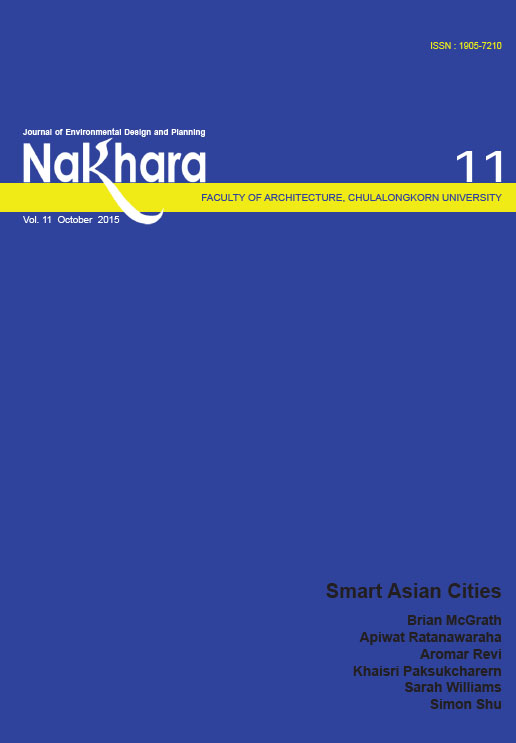Spatial Composition and Configuration Changes in the Bangkok Metropolitan Region Landscape
Main Article Content
Abstract
Bangkok and five provinces in the vicinity, called Bangkok Metropolitan Region, BMR, occupies 7,650
Square Kilometers of the most significant delta area and productive agricultural lands of Thailand.
According to 2012 database of the Land Development Bureau, Thailand, the BMR has more than 140
types of land-use classifications related to various agricultural usage; paddy fields, crop fields, orchards, perennial plots, horticulture, farming facilities and aquaculture lands. It could be said that BMR’s surrounding landscapes, the richness of patches and the diversity of ecology are defined by complex patterns of mixed land-uses. The goal of this study is to understand the overview of BMR’s ecological landscape and its changes. By studying landscape ecology, by focusing on agricultural land-use change, and by using the computer software analysis “Fragstats”, the changes of landscape metrics reveals that BMR’s ecological landscape patterns have previously been more complex. Each selected BMR landscape has changed its pattern and has unique spatial characteristics. It also appears that the loss of landscape diversity is possibly related to the increased dissimilarity of landscape composition. The Ecological landscape metrics were used as research parameters to reveal spatial characteristics of the complexity of ecological landscapes in the
Extended Metropolitan Region.

